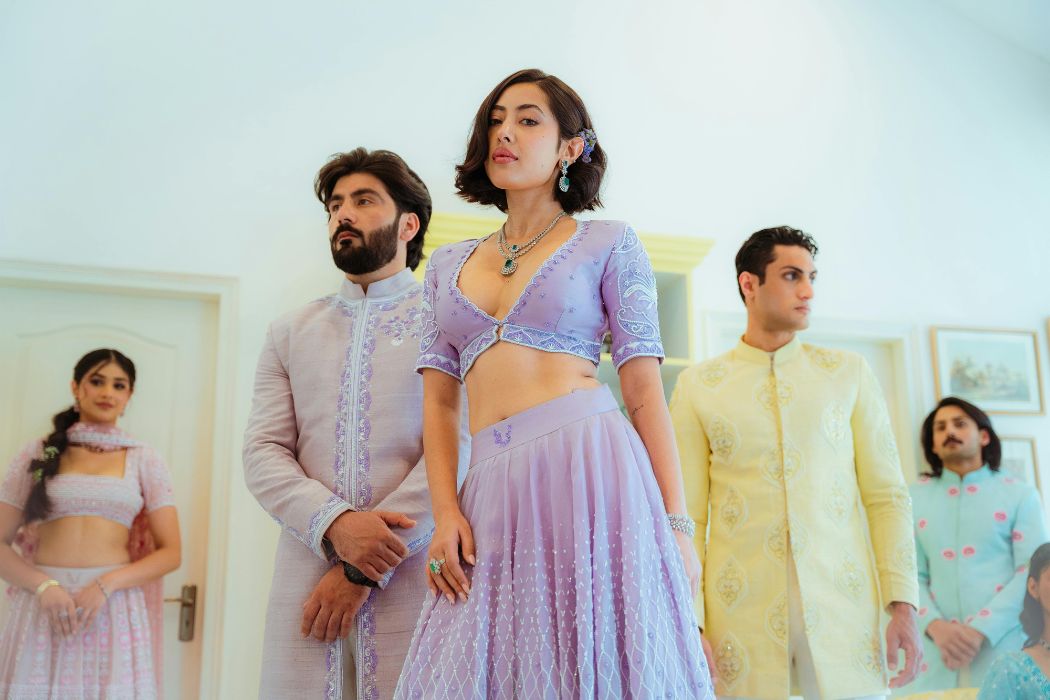


In the past decade, social media has evolved from a space to share personal snapshots into a powerful engine driving culture, commerce, and creativity. In India’s fashion ecosystem, this transformation is especially evident: platforms like Instagram, YouTube, and WhatsApp are no longer just marketing channels—they’re design studios, storefronts, and style curators all rolled into one.
Today, Indian fashion is being reimagined through the lens of social media. Whether it’s Instagram Reels launching new trends overnight, WhatsApp as a virtual storefront, or AI-powered edits turning selfies into couture frames, the digital has become inseparable from the sartorial. This article explores how social media is actively reshaping Indian fashion in 2025, drawing on current trends and data.
Table of Contents
ToggleOne of the biggest shifts in India’s fashion scene is the integration of commerce into social media platforms. Instagram, Facebook, and WhatsApp are rapidly evolving from discovery channels into full-fledged shopping hubs.
This convergence of discovery and purchase shortens the path from inspiration to transaction, making impulse buys easier and turning social media feeds into digital wardrobes.
Also read: Who is Alexandr Wang? Meta’s AI Visionary Who Says Teens Should “Vibe-Code” Around the Clock
Influencers are no longer just endorsers; they are trend originators, stylists, and even informal fashion houses in their own right.
The style narrative is no longer defined solely by big fashion houses. A local creator’s viral outfit can ignite a nationwide trend overnight.
In pre-digital times, fashion trickled down—from runway to magazines to stores. Now, it broadcasts laterally: social media accelerates, refines, or kills trends at light speed.
These mechanisms have flattened fashion hierarchies: consumers, influencers, and brands now participate in a dynamic loop of co-creation.
India is not monolithic, and social media is amplifying diversity in fashion—from regional dialects to traditional aesthetics.
This shift means fashion is not just globalized—it’s also hyper-localized.
New tools are turning photos and videos into fashion runways—and sometimes replacing them altogether.
In short: the boundary between digital and real is blurring—and fashion sits right at that intersection.
Social media is not just about aesthetics; it’s also activism. Gen Z and socially conscious consumers are using platforms to hold brands accountable.
In India, where traditional crafts hold strong roots, social media is helping revive endangered techniques by connecting artisans with modern audiences.
The transformation is powerful—but it’s not without friction.
Navigating these challenges will define which brands survive and which fade.
Looking ahead, several developments are likely to reshape fashion’s digital frontier in India:
As social media evolves, so will its role in fashion—less as a tool, more as the canvas itself.
Also read: Heartbeat of Hope: Don’t Miss a Beat — World Heart Day 2025
In India today, social media is more than a megaphone for fashion—it’s the loom. It weaves brands, creators, consumers, and trends into a rapidly changing tapestry. The style you saw on Instagram this morning isn’t just inspiration; for many, it’s tomorrow’s outfit.
Fashion in India is no longer dictated solely by elite runways—it’s crowdsourced, localized, and immediate. And as technology develops, the lines will blur further: what’s an influencer, what’s a store, and what’syouru dressing in the next scroll?

